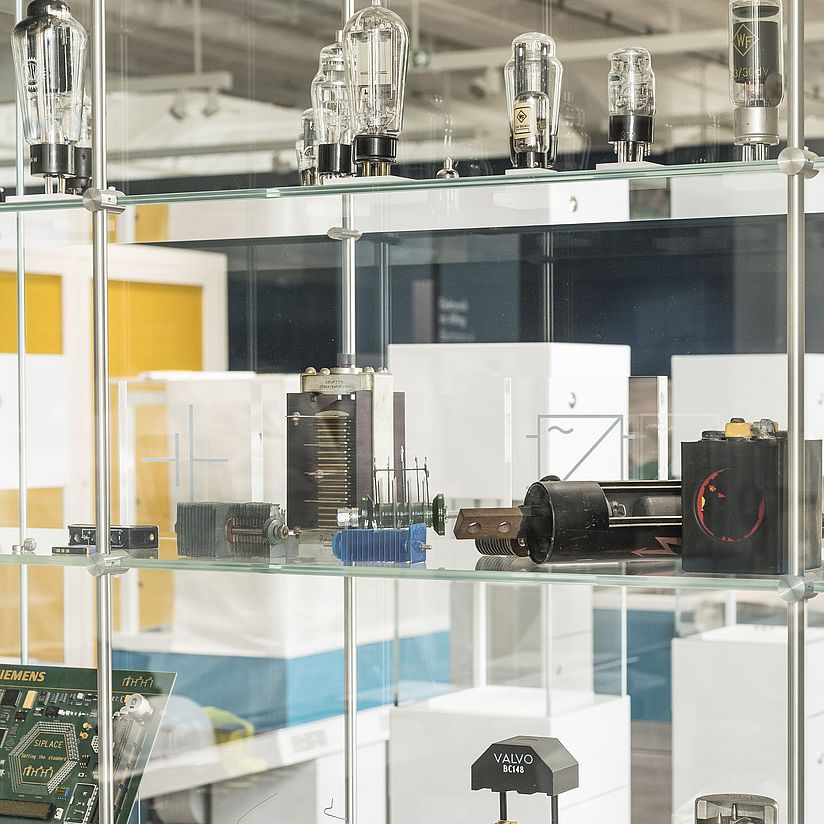
Photo: Deutsches Museum, München | Reinhard Krause Deutsches Museum
Electronics
Faster, smaller, better!
A new age begins here! Electronics has fundamentally changed our lives and made the information society possible in the first place. Transistors, capacitors, diodes, resistors & Co.: Today, electronic components are found in almost every device from all areas of life, from light switches to pacemakers, from smartphones to cars to power plants. In this exhibition, we show the development of electronic technologies over the last 100 years and their impact on society.
Faster, smaller, better – electronics have their own standards. Over the past 100 years, electronic components have shrunk to microscopic sizes, yet are more powerful than ever and are now used almost everywhere and all the time. On the stylized floor plan of a circuit board, seven different areas in the exhibition show how the “science of controlling electric current” has become an indispensable part of our lives. Here, the basics are taught, electronics in transition and its anchoring in society are shown; what the components are made of and how they are made is dealt with in the production area. The steadily growing influence of electronic devices in our everyday lives is addressed under the heading of individualization. What happens to the gigantic mass of these devices that no longer function or are wanted is shown in the recycling section. And last but not least, our radio amateurs in the amateur radio station regularly make contact with the rest of the world. Listening in is encouraged!
“Electronics, which is so formative for our everyday life, has been given a wide berth here. Our visitors can move between the first amplifier tube and the modern quantum processor, exploring, experiencing and learning about the underlying electrical engineering principles,” says Luise Allendorf-Höfer, the exhibition’s curator.
Facts and figures:
Location: Level 2
Exhibition area: 564 sqm
Exhibits and models: approx. 300
Demonstrations and interactives: 11
Media stations: 6
Dioramas: 6
Highlight: Transistor and Transistron
Transistor No. 9 arrived in Germany in 1952. It came from Bell Laboratories near New York, which had built the first working device of its kind in 1947. As part of the U.S. government’s anti-trust policy to prevent economic monopolies, Siemens obtained a license to reproduce it and founded its successful semiconductor division on it. Next to transistor No. 9 is the transistron: German physicist Herbert Franz Mataré had developed the first “European” transistor together with Heinrich Welker in a laboratory in Paris – independently of and almost simultaneously with the Americans.
Special location:
In the Electronics exhibition, the amateur radio station has also found its new place. “Delta Lima Zero Delta Mike calling ...” – this slogan has been echoing through the ether every day since 1989. In the center of the small station, you can look over the shoulders of the radio amateurs during the daily live demonstrations. Around it, radio history and technology is presented: from the pop radio transmitter to the radio set for a space mission.
